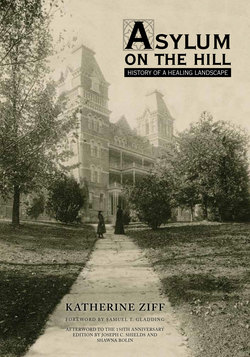Читать книгу Asylum on the Hill - Katherine Ziff - Страница 8
На сайте Литреса книга снята с продажи.
ОглавлениеFOREWORD
Some books are a joy to read. They are filled with information that is fascinating and informative. They entice you with their style, and before you know it you are into the text wholeheartedly and passionately. There is no logical explanation except that you are intrigued with what comes next and your expectations will not allow you to do anything else but read on. Katherine Ziff’s Asylum on the Hill: History of a Healing Landscape is such a work. It covers a fascinating period in the history of American psychiatry that is now vanished but left an indelible mark for the positive and progressive impact it had on mental health care.
Dr. Ziff’s focus on the Athens asylum is specific to the treatment of the mentally disturbed in Ohio in the late 1800s and captures a moment in time. It follows the ascendance of moral therapy as a movement that was humane and effective with those who were mentally distraught or thought to be such by their families and society. Ziff chronicles the lives of individuals who were admitted and treated, at least initially, from the moral therapy perspective. She humanizes notes made in the margins of official records of often-marginalized people who were in many ways similar to those with mental disorders today. Through a fascinating series of photographs, Dr. Ziff shows us what moral treatment was like in both the planning and the implementation of this unique way of helping the desperate, depressed, downtrodden, demented, anxious, and discouraged. She brings the reader into the sights, sounds, and even smells of post–Civil War America in Ohio. She describes, using the original records, the ways treatment for the “insane” worked and did not work—at least in this rural community in the Midwest.
Dr. Ziff gives us an insider’s look at an asylum that dwarfed other buildings in its surroundings and, though carefully constructed, was not always lovingly cared for. She depicts the people—the patients and their families—who occupied the halls and challenged the minds of the times as individuals much like many Americans today. She traces the rationale for the moral therapy movement, its successes, and why it faded in its effectiveness and funding. She explains the reasons the movement, like those it touched, had a life but then failed to survive, let alone thrive. Her portraits of people who influenced the asylum are wonderfully rendered in words and pictures. This historical examination of the Hocking Valley, its people, and the asylum that impacted them is alive and moving. The extensive information within the pages of this text makes what was existentially enchanting relevant to our time.
Thus, when reading this book, a person is drawn past olden times and into scenes that have a universal dimension to them. The history of the past becomes a present reality; the people described become our neighbors—only from an earlier era. We can see ourselves and those we know in these individuals and in the treatment they received. Likewise, we know the caregivers, politicians, and landscapes within this story, for though shaped in the late 1800s, they are the forebearers and even the standard-bearers of the society that has since evolved and in which we live.
Anyone who peruses Ziff’s work will not have an easy time putting it down. This book is more than a history of a time, a place, a movement, and a people. It is instead a sensitive and centered examination of growth and regression in the understanding of humankind amid stress, development, and regression. It is an exceptional peek into what life is and can be, along with what life has been. It is about a time and a movement that will always be timeless and moving in their emphasis on health, wholeness, and helping. Through Katherine Ziff, Athens, Ohio, and moral therapy come to life and become inescapably intertwined with our lives!
Samuel T. Gladding, PhD
Chair and Professor, Department of Counseling Wake Forest University
